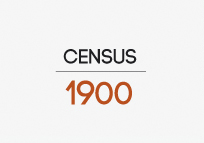




BELGIAN SOCIETY IN HISTORIC CENSUSES
Industrial census 1896
Concepts
Several principles and definitions that were applicable to the census are important for correctly interpreting the results.
1. Location of the census
The data relate to the location of employment. For example, employees from the construction sector were applied to the municipalities where they were working on 31 October 1896. Shipmasters were also registered in the locations where their ships were moored on that date.
2. Company Director
"The company director is someone who uses his own tools to transport, process or implement commodities for the consumer; this is either done alone or by salaried personnel" (article 2 of the RD of 22 July 1896). Craftsmen without any personnel who work for consumers were regarded as company directors. This was also the case for people who worked for private citizens and who were paid by the day.
3. Labourer
A labourer is someone who works/does manual labour for an employer for wages as stipulated in a written or verbal agreement. On the pre-printed census forms a distinction was made between labourers and other personnel categories (company directors, masters, delegated managers, directors and adjunct-directors, foremen, heads of departments, engineers and adjunct-engineers, security agents, office workers and other clerks).
4. Domestic worker
"Whoever produces a finished product on behalf of an industrial entrepreneur, who then sells that product, is a domestic worker; whoever finishes a product is a domestic worker as long as this person cannot ascend to the rank of independent entrepreneur under normal circumstances due to the technical nature of the work or due to his/her economic situation." These manufacturers should not be confused with "artisans indépendants", who are "people who practice a trade or perform an activity for their own account, and work directly for the consumer". We must mention that the children of "artisans indépendants" who helped their parents were not regarded as domestic workers.
Under the 855 sections mentioned above, a distinction was made between cottage industries and activities in workshops ("ateliers"). We copied this division from the source. In the event of cottage industries, we mention per type of activity whether it concerns an entrepreneur, middleman or worker (including family members). If no data about cottage industries are mentioned then the industrial activity is related to factories and workshops.
5. Business unit
An enterprise can consist of several units if that enterprise is active in different industrial branches. A factory that produces both cokes and coal briquettes has two business units, namely one in the category coke ovens and one in the branch coal agglomerates.
6.Division of personnel and machines into branches
Every staff member was only assigned to one type of activity. Employees that were active in several sectors of industrial production had to be counted under the branch of their main activity. Footnotes are used in the tables to report staff members who are missing because they were counted under other branches in the census. This information was only provided for office workers and managers (directors, managers, engineers, etc.) as well as for data related to power machines.